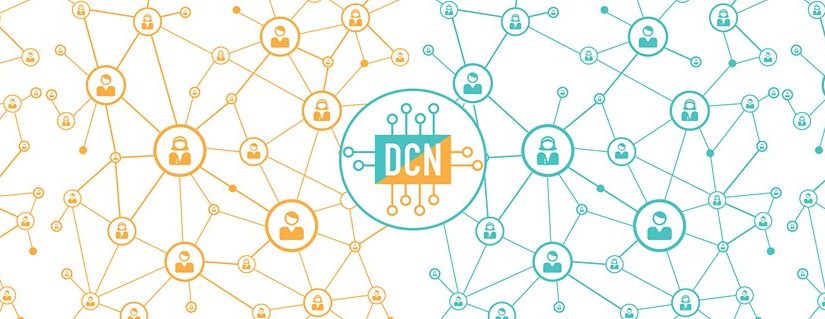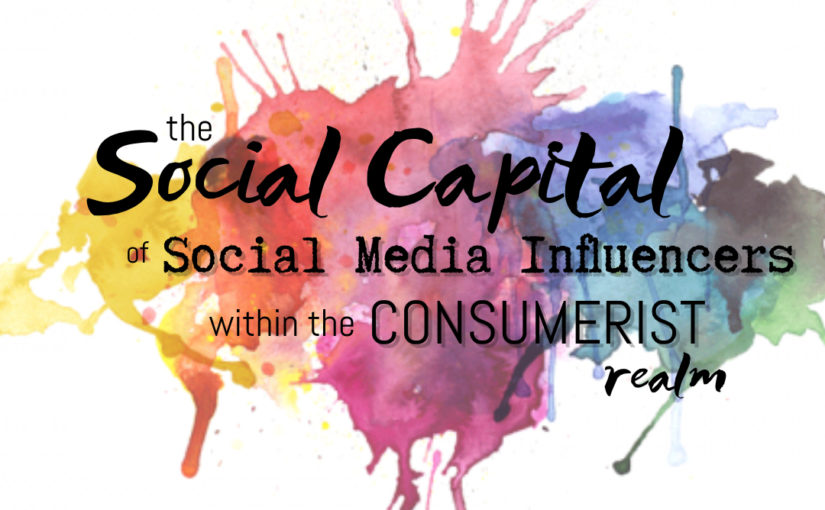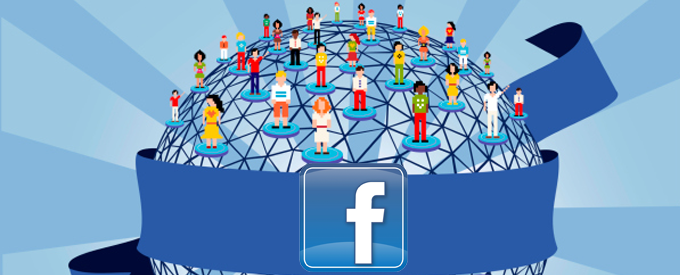Online Media Platforms and Social Networking allow for
Deceptive Communication to Occur Online with Ease
Abstract
This paper explores the connection between social networking platforms and the arise of deceptive communication in cyberspace as social media and technology become more interweaved into everyday routines. The purpose of this paper is to assess how online platforms are changing the role and meaning of identity when evaluating online forums and whether social networking has encouraged deceptive communications upon individuals as new technologies have allowed for misleading and disingenuous interactions with ease. Through analyzing examples and various author studies, further clarity on this topic should be provided to understand if social platforms do indeed influence traditional communications and interactions and if in turn, have affected how identity and communities should be comprehended online.
Keywords: social networks, identity, online identity, community, social media, deceptive interactions, catfishing.
Online Media Platforms and Social Networking allow for
Deceptive Communication to Occur Online with Ease
Technology has had a profound effect on the way it has encouraged individuals to come together and communicate (Smith and Kollock, 1999). Online media platforms allow for interactions to differ from traditional face-to-face encounters, which can allow for deceptive communication to occur online, which can result in the presence of a misconstrued and phony identities being commonplace online. This has given way to the arise of catfishing and dishonest interactions in social networking platforms and within dating communities. These social networks have stripped away many of the core signals and concepts that make up the qualities of a conventional face-to-face encounter and therefore has made it easier for phonies to appear on social networks as someone they are not. (Smith and Kollock, 1999) On these said online networks, communication is fast, inexpensive and reaches people at a world-wide level with platforms that allow for collaboration and interaction that has not yet been seen before this recent decade. (Smith and Kollock, 1999) This raises questions such as “How is the internet changing our basic concepts of identity, self-governance, and community?” (Smith and Kollock, 1999, p. 1). The powerful rise of social networking in accordance with the intensive reliance on technology this modern age has allowed, has encouraged individuals to take part in deceptive activities online, such as the introduction of ‘Catfishing’ on online platforms.
How the Rise of the Net has altered the meaning of Identity Online
The role of identity when evaluating social networks (and the communities that are created within these networks) is significant. When interacting within these social networks and communities, being aware of the persons who you are communicating and interacting with is vital. When communicating in the physical realm, individuals can be certain of whom they are connecting with, due to all the bodily cues that come with physical interaction. When evaluating virtual communication, it’s a very different premise (Donath, 1999). The online world allows people into a space which is abundant with interactive social platforms in which individuals are able to engage and meet with each other. “Instead of people talking to machines, networks are being used to connect people to people…These shifts make the creation of thousands of spaces to house conversations and exchanges between far-flung groups of people practical and convenient. Using network interaction media like email, chat and conferencing systems people have formed thousands of groups to discuss a range of topics, play games, entertain one another and even work on a range of complex collective projects” (Smith and Kollock, 1999, p.3) This has given rise to a completely new definition of identity when evaluating users of the internet, with parallel and multiple identities existing through innumerable platforms through virtual screens at a global scale (Turkle, 1997).
As Pearson (2009 n.p) outlines “Identity- as- performance is seen as part of the flow of social interaction as individuals construct identity performances fitting their milieu. With a heightened self–consciousness, online environments take this construction of performance to another level.” The internet’s technological advancement that has made way for an abundance of social networks, has indeed contributed to the sense of identity for individuals online. The introduction of these social networks is substantial, as the usage of these networks has webbed its way into countless individual’s everyday lives. Considering the limitless social network communities available to people, individuals can now express their identities through social media platforms such as Facebook, Instagram, and Snapchat. Through Blogs, Wikis or YouTube or even through dating communities like Tinder, eHarmony, and Bumble. There are endless opportunities for consumers of the net to latch their identities onto and “Real life can be just ‘one more window’” (Turkle, 1997, p. 74) These social spaces and platforms in which people are now engaging in and expressing these identities has given rise to the question, are the people we meet and interact with online, in this window, to be trusted?
The Net is Allowing for Deceptive Communication Online with Ease
The rise of the internet has also given rise to questions about the genuineness of the individuals we interact with online, as self-presentation of individuals is an aspect that can be controlled easily raising thought about the authenticity of others online. “We begin with a consideration of identity, the basic building block of social interaction. All of our interactions, even those with strangers, are shaped by our sense of with whom we are interacting. In face-to-face and telephone interactions, there are a wealth of cues of varying reliability to indicate our identity and our intentions. Our clothes, voices, bodies, and gestures signal messages about status, power and group membership. We rely on our ability to recognize fellow group members in order to know who we can turn to and what we can expect.” (Smith and Kollock, 1991, p.8) With these distinctive physical cues stripped away, it leaves space for the imagination to replace what isn’t there. This means anyone on the internet can be anybody or anything they wish to be. The ease of self-presentation has never been so achievable for individuals and the will to create a persona for yourself is one that many find intriguing. “Critics worry that life on the net can never be a meaningful or complete because it will lead people away from the full range of in-person contact. Or, they worry that people will get so engulfed in the simulacrum virtual reality, they will lose contact with real life” (Wellman & Guilla, 1997). Not only is it of concern that meaning, and loss of contact is possible, But, what does self-presentation mean for individuals online? Are internet users under threat of ingeniousness and unsafe encounters? “O’Brien points out that there is a strain between those who view online interaction as an opportunity to ‘perform’ a variety of perhaps fabricated roles versus those who see cyberspace as a new communication medium between “real people” (Smith and Kollock, 1999, p.12). Moreover, how are we to define and decide who a real person is?
On differing social network platforms, the terms and conditions generally differ regarding whether the users of the site are able to communicate through an alternative identity than the one they were ‘legally assigned’ (Van Der Nagel & Frith, 2015). An example of this; is the controversial “real-name” anti-anonymity movement that Facebook CEO, Mark Zuckerberg is leading. The user policies Facebook outlines specifically state that users are expected to identify as one person. With Zuckerberg stating, “having two identities for yourself is an example of a lack of integrity” (Van Der Nagel & Frith, 2015, n.p). However, this has caused some uproar from the drag queen community after Facebook commenced a mass deletion of personal pages from those who prefer to use stage names rather than legitimate names (Buhr, 2014).
Participants of the drag community believe they identify with their stage identities more so than their lawful one and are protesting for the right to express this online. (Buhr, 2014) An extract from their appeal is as follows; “We cannot emphasize enough that Facebook is a poor arbiter of what is or isn’t a real name. Performers with legitimate-appearing names get locked out of their accounts while people with account names like “Jane ICanBeBadAllByMyself Doe” go without scrutiny” (Buhr, 2015, n.p). However, on the flipside of this argument, some argue that the allowance of using multiple identities or illegitimate identities online can be extremely dangerous and can cause major turmoil for some participants of the online world, there have been known “catfishing” incidences that are becoming commonplace amongst Facebook as well as many other social networking sites. “The net is only one of many ways in which the same people may interact. It is not a separate reality. People bring to their online interactions such baggage as their gender, stage in the life-cycle, cultural milieu, socioeconomic status, and off-line connections with others” (Wellman & Guila, 1997, p.3) But what does this signify for our basic concepts of identity, self-presentation and community when people connecting on the social realm have imagined up their own separate reality, and these factors are not true to the person behind the screen.
Deceiving Communication, Phoney Identities and Catfishing Incidence on Social Media and Dating Platforms
The use of modern technology has become a 21st-century cultural necessity to most individuals, most finding it hard to function without the usage of social media in their daily routines. That being said, there are also certain risks that may accompany the use of particular social networking sites. With online deception and catfishing becoming relatively normal to the online realm, users are at risk of experiencing threatening and misleading encounters online (Blazka, Smith & Smith, 2017). ‘Catfishing’ is a term that encompasses the action of an individual online, enacting on an incident of treachery and deceit by fictionalizing an entire being on the virtual realm (Kotteman, 2015). These predators assume the role of an alternative identity to deliberately trick people into a fictitious romantic or emotive relationship by stealing somebody else’s personal information and pictures or by fabricating a unique identity, and in online forums, this act is becoming progressively more mainstream (Kotteman, 2015). One of the first globally documented cases of Catfishing was recorded by known NFL football player Manti Te’o who was fooled into believing his cyber girlfriend, Lennay Kekua, had passed away from leukaemia, or had even existed (Blazka et al., 2017).
The investigators of the case state; “There was no Lennay Kekua. … She was not diagnosed with cancer, did not spend time in the hospital, did not engage in a lengthy battle with leukaemia. She never had a bone marrow transplant. She did not request he send white flowers to her funeral. Her favourite colour was not white. Her brother, Koa, did not inform Manti Te’o that she was dead. She did not exist. (Kotteman, 2015, p. 2). She was merely a creation of someone’s imagination to intentionally deceive. After the relationship between Te’o and fictitious Lennay had been so deeply broadcasted by the media, the world was introduced to the phenomenon of Catfishing, and individuals felt disturbed and scared of the online realm they assumed they could trust (Kotteman, 2015). Catfishing is not only common on social networking sites such as Facebook but has also found its way into genuine dating platforms used by innocent customers whom are intentionally searching for a life partner. “With more than one-third of relationships being facilitated through Internet dating and with 45% of online daters citing social networking sites as the primary way in which they connect with potential mates, there are clear psychological and relational implications that make studying online interaction more important than ever” (Kadrich, 2016, p.9).
The conception of online dating has given humankind the chance to witness and observe the shifting traditional standards surrounding relationships online and understand the significant features of online behaviour, such as “impression formation and self-presentation strategies” (Van Der Nagel & Frith, 2015, p. 415). As online dating has considerably transformed from being a “marginal to mainstream social practice” (Van Der Nagel & Frith, 2015, p. 415) over the past decade with 17.5% of internet users claiming they have tried online dating (Kadrich,2016 ), it can be imagined how many individuals now contribute to the online dating world and what that could signify for the genuine partakers who are forced to engage with phonies, and how these misconstrued identities are becoming more common to ensnare a stranger. In some cases, Catfishing is used as a method to scam lonely and vulnerable romantics. Ian Doney was one of many victims of Catfishing, who at 51 years of age, trusted he had finally found love after finding a woman on a single persons website (Computer Act!ve, 2017). He was scammed out of thousands of dollars, sending his ‘love’, money to meet him abroad. She never showed up. He tried again to send her money and meet her, again, to no avail. Doney was eventually scammed into substantial debts and subsequently struggled to afford basic necessities or to even eat. He eventually spiraled into an immense depression and eventually paid the ultimate price by slitting his wrists and ending his life (Computer Act!ve, 2017).
This is just one example of the dire and extensive effects Catfishing and dishonest social networking can have on innocent victims, with researching showing “that roughly 20% of online dating service users use deceptive tactics” (Kadrich, 2016, p. 52) Even if the deception is something as minor as to enhance their appearance online to appear more desirable or lying about education, culture or class (Kadrich, 2016). It is evident that the technologically reliant world in which we live is increasingly becoming more deceptive on these social networking platforms used by individuals everyday, due to the ease and effortlessness it takes for individuals to conjure up a phony identity and ensnare a stranger.
Conclusions
To close, it is undeniably apparent that modern technology has had a powerful impact on the development and progression of social networks and the way in which individuals are now choosing to interact and communicate online with other fellow networkers. As the net provides a space for individuals that is substantially varying to that of a traditional face-to-face encounter due to the lack of bodily cues, it is proving to be a space that can allow for deceptive communication with ease. The existence of fraudulent and phoney identities is becoming more commonplace with cases of catfishing and deception occurring at a high rate on varying social platforms. This is due to the effortlessness it takes for these imitation artists to fictionalise an entire identity on these platforms that run with accessibility and convenience. It is ascertaining to be a space that is potentially threatening concepts of identity and community as we know it and revolutionising how we comprehend these concepts online.
References
Blazka, M., Smith, L.E., & Smith, K.D. (2017). Follow Me, What the Harm? Considerations of Catfishing and Utilizing Fake Online Personas on Social Media. Journal of Legal Aspects of Sport, 27, 32-90. Retrieved from http://heinonline.org.dbgw.lis.curtin.edu.au/HOL/Page?public=false&handle=hein.journals/jlas27&page=32&collection=journals#
Buhr, S. (2014). Facebook won’t budge on letting drag queens keep their names. TechCrunch Retrieved from http://techcrunch.com/2014/09/18/facebook-wont-budge-on-letting-drag-queens-keep-their-names/.
Ellison, N., Heino, R., & Gibbs, J. (2006). Managing Impressions Online: Self-Presentation Processes in the Online Dating Environment. Journal of Computer-Mediated Communication, 11(2), 415-441. doi:10.1111/j.1083-6101.2006.00020.x
How can we Detect Online Dating Scammers? (2017). Computer Act!ve (504), 11. Retrieved from https://search-proquest com.dbgw.lis.curtin.edu.au/docview/1940858972?accountid=10382
Kadrich, M. (2016). Examining the Use of False Identities in Online Romantic Interactions. Retrieved from Retrieved from https://search-proquest-com.dbgw.lis.curtin.edu.au/docview/1832346720?accountid=10382
Kottemann, K. L. (2015). The Rhetoric of Deliberate Deception: What Catfishing Can TeachUs. Retrieved from https://search-proquest-com.dbgw.lis.curtin.edu.au/docview/1707929589?accountid=10382
Smith, M. A., Kollock, P., & Ebooks, C. (1999). Communities in cyberspace / edited
by Marc A. Smith and Peter Kollock. London ; New York: London ; New York : Routledge.
Wellman, B., & Gulia, M. (1999). Virtual Communities as Communities: net surfers don’t ride alone. In M. A. Smith & P. Kollock (Eds.), Communities in cyberspace (pp. 167-194). Retrieved from http://groups.chass.utoronto.ca/netlab/wp-content/uploads/2012/05/Net-Surfers-Dont-Ride-Alone-Virtual-Community-as-Community.pdf
Van der Nagel, E., & Frith, J. (2015). Anonymity, pseudonymity, and the agency ofonline identity: Examining the social practices of r/Gonewild. First Monday, 20(3), <xocs:firstpage xmlns:xocs=””/>. doi:10.5210/fm.v20i3.5615
Donath, J. (1999). Identity and Deception in the Virtual Community. In P. Kollock, & M. A. Smith (Eds.), Communities in Cyberspace (pp. 29-59). Retrieved from http://smg.media.mit.edu/people/Judith/Identity/IdentityDeception.html
Pearson, E. (2009). All the World Wide Web’s a stage: The performance of identity in onlinesocial networks. First Monday, 14(3). doi:10.5210/fm.v14i3.2162
Turkle, S. (1997). Multiple Subjectivity and Virtual Community at the End of the Freudian Century. Sociological Inquiry, 67(1), 72-84. doi:10.1111/j.1475-682X.1997.tb00430.x
This work is licensed under a Creative Commons Attribution-NonCommercial-NoDerivatives 4.0 International License.












